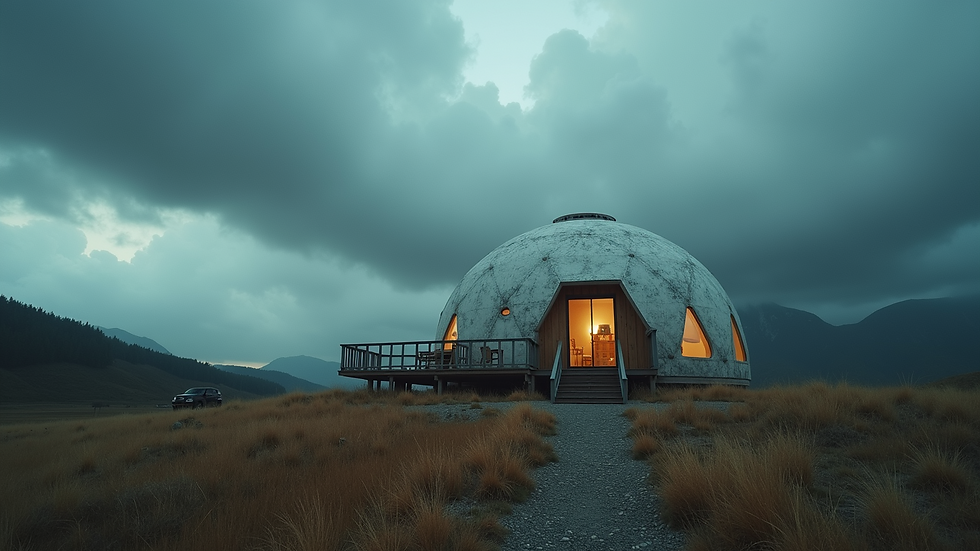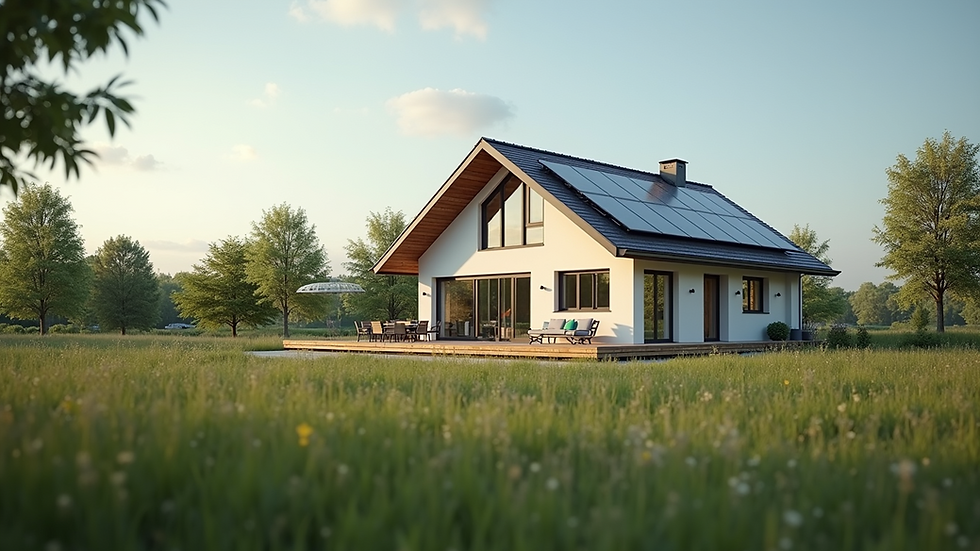Why Geodesic Dome Houses Are Eco-Friendly
- Jovan Eco Hause
- Sep 27
- 3 min read
Geodesic dome homes have been gaining attention for their unique design and environmental benefits. These structures are not only visually striking but also offer a sustainable alternative to traditional housing. Their shape and construction methods contribute to energy efficiency, reduced material use, and resilience against natural elements. This article explores why geodesic dome homes are considered eco-friendly and how they can be a smart choice for sustainable living.
Energy Efficiency in Geodesic Dome Homes
One of the most significant advantages of geodesic dome homes is their exceptional energy efficiency. The spherical shape minimizes surface area relative to the volume inside, which means less exterior wall space for heat to escape or enter. This design helps maintain a stable indoor temperature throughout the year.
Reduced heating and cooling costs: The dome’s shape allows air to circulate naturally, reducing the need for artificial heating and cooling systems.
Even distribution of temperature: Warm air rises and circulates evenly, preventing cold spots and drafts.
Natural light optimization: Many dome homes incorporate skylights or large windows that allow sunlight to penetrate deeply, reducing the need for electric lighting during the day.
For example, a geodesic dome home in Portugal has been designed to maximize solar gain while minimizing heat loss, making it comfortable year-round with minimal energy consumption.

Sustainable Materials and Construction of Geodesic Dome Homes
The construction of geodesic dome homes often involves sustainable materials and innovative building techniques that reduce environmental impact.
Less material usage: The dome’s structure is incredibly strong, allowing builders to use fewer materials without compromising stability.
Recyclable and renewable materials: Many dome homes use wood, bamboo, or recycled steel, which are more sustainable than conventional concrete or brick.
Prefabrication options: Some dome kits are prefabricated, reducing waste and construction time on-site.
Using sustainable materials not only lowers the carbon footprint of the building process but also ensures that the home is healthier for its occupants. For instance, natural insulation materials like sheep’s wool or cork plate native Portugal material can be used inside the dome walls, enhancing thermal performance without harmful chemicals.

Can a Tornado Destroy a Dome House?
The resilience of geodesic dome homes is another reason they are eco-friendly. Their aerodynamic shape allows wind to flow smoothly around the structure, reducing pressure points that can cause damage during storms.
Wind resistance: Domes can withstand high winds better than traditional rectangular homes.
Structural integrity: The interconnected triangles distribute stress evenly, making the dome incredibly strong.
Disaster resilience: In areas prone to tornadoes or hurricanes, dome homes offer enhanced safety and durability.
Studies and real-life examples have shown that geodesic dome homes often survive extreme weather events with minimal damage. This durability means fewer repairs and less material waste over time, contributing to sustainability.

Environmental Benefits Beyond Energy and Materials
Beyond energy savings and sustainable construction, geodesic dome homes offer other environmental advantages.
Smaller footprint: The efficient use of space means dome homes can be smaller without feeling cramped, reducing land use.
Water collection: The dome shape is ideal for rainwater harvesting systems, which can be integrated into the design.
Integration with nature: Dome homes often blend well with natural landscapes, minimizing disruption to local ecosystems.
Additionally, many dome home designs incorporate green roofs or living walls, which further improve insulation and support biodiversity.
Practical Tips for Building Your Own Eco-Friendly Dome Home
If you’re considering building a geodesic dome home, here are some practical recommendations to ensure it is as eco-friendly as possible:
Choose local, sustainable materials to reduce transportation emissions.
Incorporate passive solar design by orienting the dome to maximize sunlight in winter and shade in summer.
Use high-quality insulation to maintain energy efficiency.
Install renewable energy systems such as solar panels or small wind turbines.
Plan for water conservation with rainwater harvesting and greywater recycling.
Work with experienced builders who understand dome construction and sustainability principles.
By following these steps, you can create a home that's not only stunning and unique but also eco-friendly! Dive into our virtual tour and find the perfect spot for your Geodesic Eco Glass House!
For those interested in exploring this innovative housing option, geodesic dome houses offer a compelling blend of sustainability, durability, and design. Their eco-friendly features make them a smart choice for the future of housing.





Comments